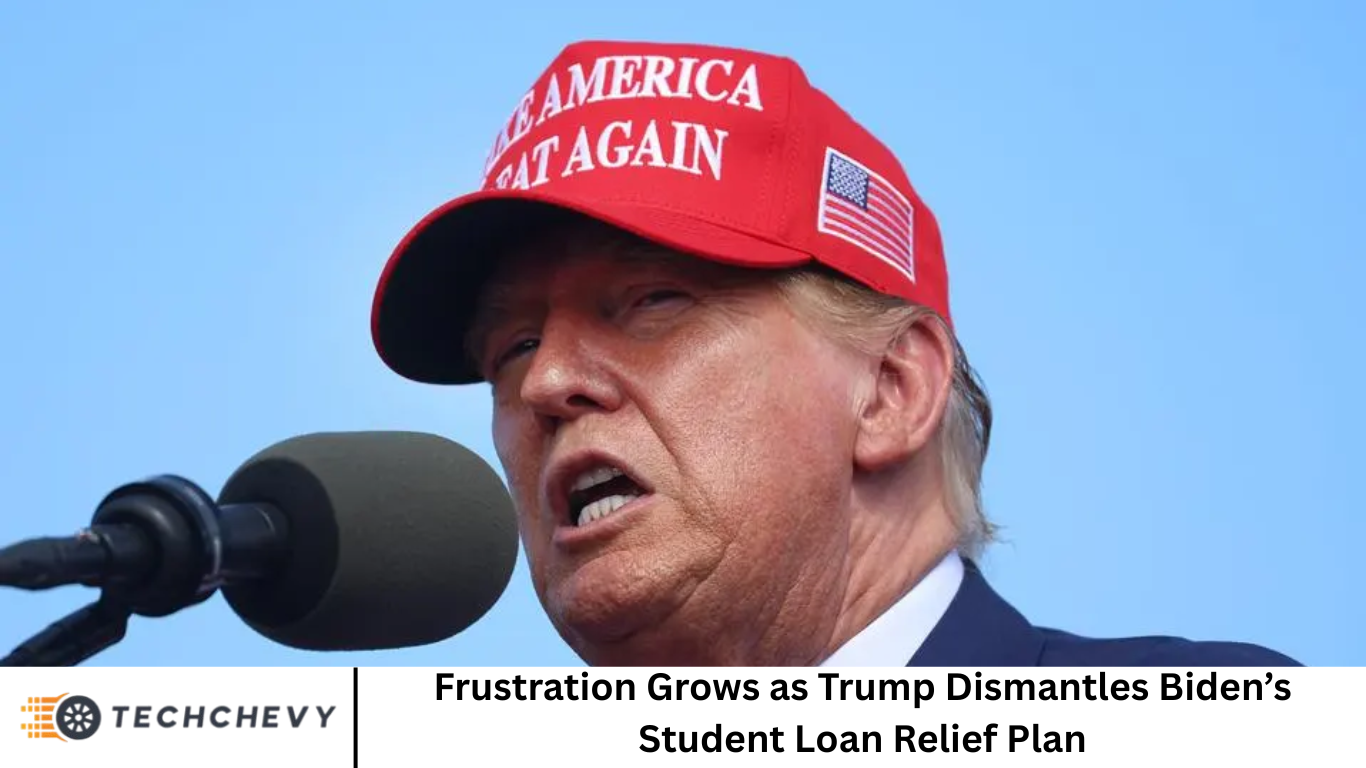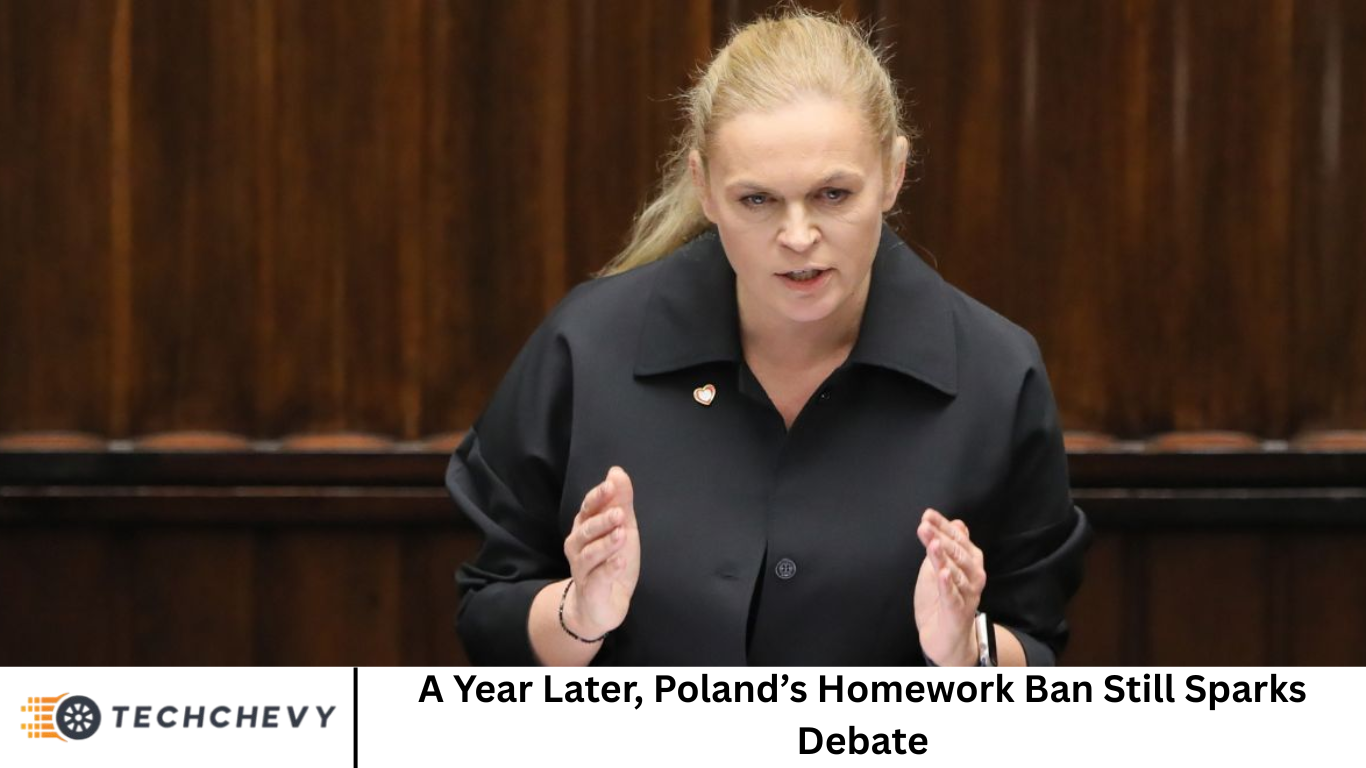Frustration Grows as Trump Dismantles Biden’s Student Loan Relief Plan

In a political shift that has left millions of borrowers reeling, the dismantling of President Biden’s student loan relief plan under the Trump administration has ignited widespread concern, protest, and uncertainty. Designed to ease the financial burden on graduates drowning in debt, Biden’s plan aimed to provide sustainable, income-driven relief.
With over 43 million Americans holding student loans totaling more than $1.7 trillion, the stakes couldn’t be higher. For many, Biden’s initiative represented hope. But as the new administration takes a different course, frustration is replacing optimism — especially for low- and middle-income borrowers.
Its abrupt rollback signals not only a reversal in policy but also a dramatic shift in how the U.S. government views higher education and financial assistance.
More Read: Titan Quest 2 Falls Short of Delivering True ARPG Excitement — For Now
What Was Biden’s Student Loan Relief Plan?
President Joe Biden’s approach to student loan reform was centered on three key goals: debt forgiveness, interest relief, and income-based repayment restructuring. The cornerstone of this was the SAVE plan (Saving on a Valuable Education), which replaced older repayment systems with more borrower-friendly terms. It:
- Allowed some borrowers to qualify for $0 monthly payments based on income.
- Promised interest-free balances for those meeting payment obligations.
- Offered forgiveness after 10 to 20 years, depending on original loan amount.
Beyond that, the plan aimed to forgive up to $10,000–$20,000 in federal student loans for eligible individuals, particularly Pell Grant recipients. It was not without legal and political challenges, but it marked a step forward for many students who had long seen higher education as a trap rather than a springboard.
Trump’s Return to Office: A Dramatic Shift
With former President Donald Trump’s return to the White House, the federal approach to student loans took a sharp turn. Citing concerns over fiscal responsibility, fairness, and executive overreach, Trump moved swiftly to unwind Biden’s student loan relief programs.
The Trump administration argued that widespread debt cancellation was unfair to those who had already paid off loans or never attended college. They also claimed the executive branch had exceeded its authority in offering forgiveness without congressional approval.
Within months, key elements of Biden’s relief plan were repealed or rewritten:
- The SAVE plan was canceled and replaced with a new, less forgiving system.
- Student loan interest resumed, including retroactive adjustments for some.
- Forgiveness timelines were extended, with many borrowers now facing repayment for up to 30 years.
Several income-based repayment options were merged or removed, simplifying the system but offering fewer benefits.
The Emotional and Financial Impact on Borrowers
For millions of borrowers, this reversal has been devastating. Many had made life decisions—buying homes, starting families, changing careers—based on the belief that their student loan burden would ease. Now, those dreams feel out of reach.
Real Voices from Borrowers:
- Tasha, 29, Social Worker: “I was finally getting ahead. I had $0 payments under SAVE, and I was planning to go back to school. Now? I’m paying $400 a month and living with my parents again.”
- Miguel, 42, Father of Two: “I feel like I’ve been lied to. I didn’t vote for Biden just for loans, but it was a huge part of it. And now I’m being punished for something that was supposed to help us.”
- Leah, 35, Teacher: “Public service forgiveness was the only reason I took this career path. Now, with the changes, I don’t even know if I qualify anymore.”
The frustration isn’t just emotional—it’s financial. Credit scores are dropping, defaults are rising, and many are being forced to choose between loan payments and basic needs like housing or healthcare.
Analyzing the Replacement: The New Repayment Assistance Model
The Trump administration introduced a Repayment Assistance Program (RAP) to replace Biden’s SAVE plan. While marketed as “streamlined and sustainable,” critics say it’s punitive and regressive.
Key Features of RAP:
- Minimum monthly payment of $10, regardless of income level.
- Forgiveness only after 30 years, no matter the original loan size.
- Interest accrues immediately unless a borrower pays more than the minimum.
Only one standard income-based plan remains, tied rigidly to annual gross income with no deductions for dependents or cost-of-living differences.
Supporters claim RAP ensures borrowers contribute something and deters reckless borrowing. Opponents argue it punishes the poor, extends the debt cycle, and undermines the value of public education.
Disproportionate Impact on Marginalized Communities
Data shows that Black, Hispanic, and low-income borrowers are disproportionately impacted by student debt. These groups tend to borrow more, default more often, and take longer to repay loans.
Under Biden’s plan, many of these borrowers were finally seeing progress:
- Black women, who carry the highest student loan debt on average, were most likely to benefit from income-based forgiveness.
- First-generation college students, often from working-class backgrounds, were beginning to see a return on their educational investments.
Now, that progress has stalled—or even reversed. Financial experts warn that the widening gap in student loan equity will have generational consequences, affecting everything from wealth accumulation to retirement planning.
Political Fallout and Growing Activism
The dismantling of Biden’s student loan plan has reignited political tensions nationwide. Protestors have taken to college campuses, city halls, and state capitals. “Debt is not destiny” and “Education is a right” are rallying cries once again.
Organizations like the Student Debt Crisis Center, NAACP, and AFT (American Federation of Teachers) are mobilizing:
- Hosting workshops to help borrowers understand new terms.
- Filing lawsuits challenging the legality of the new system.
- Pushing for legislation to reinstate some version of SAVE.
Some progressive lawmakers in Congress have introduced bills to codify debt relief into law, but their efforts face stiff resistance in a Republican-led Senate.
What Can Borrowers Do Now?
For those caught in the crossfire of changing policies, the options are limited but crucial.
Practical Steps:
- Contact Loan Servicers Immediately: Understand your current repayment plan, accrued interest, and new options.
- Enroll in the RAP if no alternatives exist: While flawed, it may offer temporary stability over default.
- Budget for Interest Resumption: For those under forbearance or deferment, prepare for compounding interest.
- Explore Public Service Options Carefully: PSLF still exists but has stricter criteria. Ensure your employment qualifies.
Engage in Advocacy: Join coalitions, write to legislators, or support campaigns aimed at bringing back relief.
Above all, borrowers must stay informed. With policy so tied to politics, the 2026 midterms and 2028 election could be decisive in shaping the future of student debt.
Frequently Asked Question
What was Biden’s student loan relief plan originally meant to do?
It aimed to reduce monthly payments, eliminate interest accrual for low-income borrowers, and forgive remaining balances after 10–20 years depending on loan type and income.
Why did Trump cancel the plan?
Trump’s administration cited legal challenges, budget concerns, and a desire for fairness to those who had already repaid loans or never borrowed.
What’s the biggest change under the new RAP program?
The forgiveness period was extended to 30 years, and interest resumes immediately. There is also a required minimum monthly payment of $10, even for low-income borrowers.
Can I still qualify for Public Service Loan Forgiveness (PSLF)?
Yes, but eligibility has narrowed. Your employer must now meet more stringent criteria, and certain nonprofit or advocacy groups may no longer qualify.
Will interest that was paused now apply retroactively?
In some cases, yes. Borrowers who paused payments under the assumption that interest would remain frozen may see added balances.
Can I switch repayment plans?
Yes, but your options are now limited. There’s only one primary income-driven plan, and switching out of RAP could result in loss of progress toward forgiveness.
Is there any chance relief will return?
Possibly. If political leadership changes or new legislation passes, a version of the SAVE plan or a similar initiative could be revived.
Conclusion
The frustration surrounding the rollback of Biden’s student loan relief plan isn’t just about money. It’s about broken trust, shifting goalposts, and the weight of a system that many feel is rigged against them. For borrowers who thought they were finally catching a break, Trump’s changes feel like punishment for daring to hope. Whether relief returns or the status quo hardens remains to be seen. But one thing is certain: student debt has become a defining issue for an entire generation—and it’s not going away quietly.




